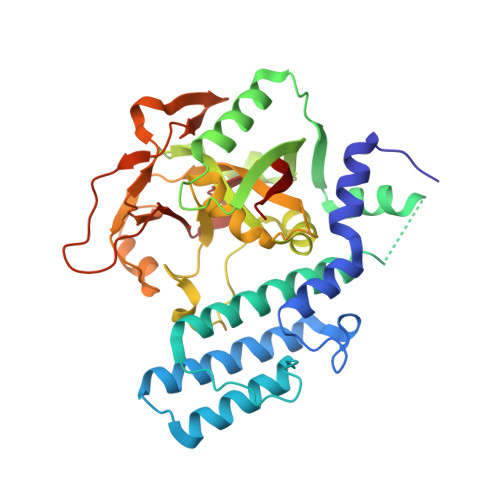Crystal Structure of the Catalytic Fragment of Murine Poly(Adp-Ribose) Polymerase-2
Oliver, A.W., Ame, J.C., Roe, S.M., Good, V., De Murcia, G., Pearl, L.H.(2004) Nucleic Acids Res 32: 456
- PubMed: 14739238
- DOI: https://doi.org/10.1093/nar/gkh215
- Primary Citation of Related Structures:
1GS0 - PubMed Abstract:
Poly(ADP-ribose) polymerase-1 (PARP-1) has become an important pharmacological target in the treatment of cancer due to its cellular role as a 'DNA-strand break sensor', which leads in part to resistance to some existing chemo- and radiological treatments. Inhibitors have now been developed which prevent PARP-1 from synthesizing poly(ADP-ribose) in response to DNA-breaks and potentiate the cytotoxicity of DNA damaging agents. However, with the recent discoveries of PARP-2, which has a similar DNA-damage dependent catalytic activity, and additional members containing the 'PARP catalytic' signature, the isoform selectivity and resultant pharmacological effects of existing inhibitors are brought into question. We present here the crystal structure of the catalytic fragment of murine PARP-2, at 2.8 A resolution, and compare this to the catalytic fragment of PARP-1, with an emphasis on providing a possible framework for rational drug design in order to develop future isoform-specific inhibitors.
- Cancer Research UK DNA Repair Enzyme Group, Section of Structural Biology, The Institute of Cancer Research, Chester Beatty Laboratories, 237 Fulham Road, London SW3 6JB, UK.
Organizational Affiliation:
















